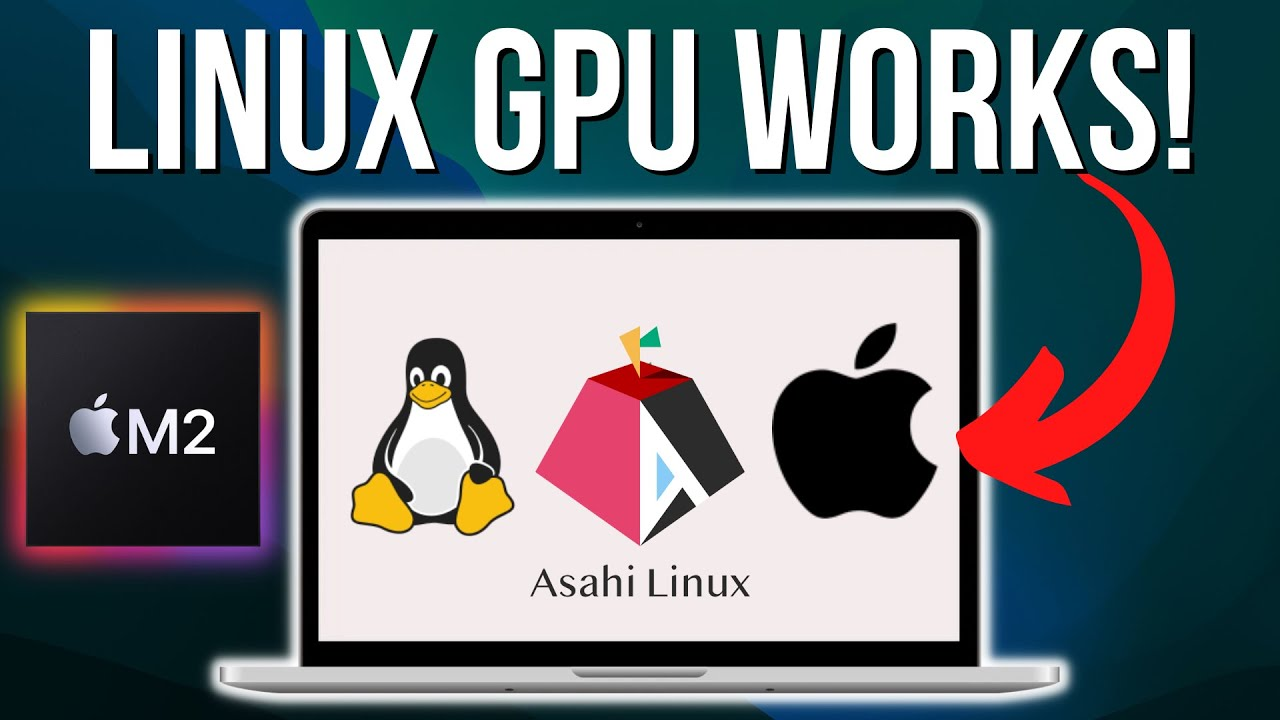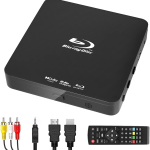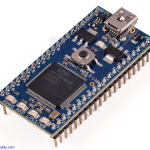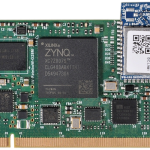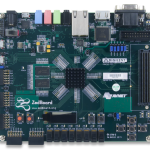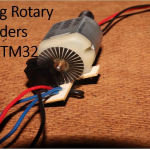Asahi Linux gaming is revolutionizing the way enthusiasts approach gaming on Apple Silicon devices. With the emergence of Apple’s M1 and M2 chips, dedicated drivers have paved the way for a new era of gaming performance on Apple Silicon. The Asahi Linux team has crafted the only conformant OpenGL, OpenCL, and Vulkan drivers tailored for these impressive CPUs, significantly enhancing the potential for gaming on these platforms. While demanding games can struggle to hit the 60 FPS mark due to system emulation overhead, many indie titles are already running smoothly, showcasing the increasing viability of Linux on Apple devices. As developers continue to prioritize performance improvements, the future looks bright for gamers seeking to unlock the full potential of their Apple hardware through innovative Linux solutions.
Exploring the realm of gaming on Apple’s ARM-based architecture has never been more enticing. The advancements in M1 and M2 drivers through the Asahi Linux project are setting new standards for gaming on these sophisticated devices. By providing essential OpenGL and Vulkan support, Linux enthusiasts can now experience a broader selection of games seamlessly. Although some of the latest titles may not yet achieve optimal frame rates, numerous indie games are thriving, showcasing the capabilities of Linux operating systems on Apple hardware. As the community pushes forward, the landscape of Apple Silicon gaming is evolving rapidly, promising an exciting future for gamers and developers alike.
Unlocking Asahi Linux Gaming Potential on Apple Silicon
For gamers eager to leverage the power of Apple Silicon, Asahi Linux emerges as a transformative solution. The introduction of the M1 and M2 chips into the gaming sphere has posed new challenges and opportunities. Asahi Linux is equipped with state-of-the-art drivers that are not only conformant but optimized for a seamless gaming experience, utilizing OpenGL, OpenCL, and Vulkan technologies. With continuous updates and community engagement, gamers can anticipate enhancements that will push the boundaries of what’s possible on Apple devices.
The Asahi Linux team has made significant strides in unlocking the gaming potential of Apple’s M1 and M2 chips. By focusing on drivers that are compliant with industry standards, they ensure smooth gameplay and compatibility with a wide range of gaming titles. Emerging indie games, in particular, have found a welcoming environment on these platforms, proving that performance optimization is a tangible goal. Despite some limitations with more demanding titles, developers are actively addressing these issues to boost gaming performance on Apple Silicon.
Optimizing Linux for Gaming Performance on Apple Devices
With gaming evolving rapidly, optimizing Linux on Apple devices is crucial for maximizing performance. Asahi Linux takes center stage by offering essential drivers that facilitate impressive gaming capabilities on M1 and M2 systems. Gamers often require at least 16 GB of RAM for a satisfactory performance, which is a standard expectation for many prominent titles. Recognizing this demand, the Asahi Linux team is committed to enhancing the gaming environment, addressing emulation overhead to minimize performance bottlenecks.
Linux on Apple devices not only paves the way for innovative gaming but also enhances the overall user experience. In the quest for higher frame rates and smoother gameplay, many users have reported success with indie games running efficiently on Asahi Linux. This draws attention to the growing community that surrounds Linux gaming on Apple Silicon, fostering collaboration and knowledge sharing among enthusiasts. As gaming performance on Apple Silicon improves, the horizons for developers and gamers alike expand tremendously.
The Future of Apple Silicon Gaming with Asahi Linux
As the gaming landscape continues to adapt, the future of Apple Silicon gaming powered by Asahi Linux looks promising. Developers are actively working to refine existing frameworks and release updates that can enhance the gaming experience. The team’s dedication to achieving ‘correctness’ in their OpenGL drivers underpins their commitment to providing users with reliable and performance-centric gaming solutions. Looking ahead, there is a clear pathway for the introduction of even more sophisticated gaming experiences that capitalize on the capabilities of Apple’s advanced chip architecture.
Incorporating cutting-edge features to improve gameplay and stability will be paramount moving forward. There are plans to address the existing limitations on frame rates and ensure that more contemporary gaming titles can perform optimally. The impact of high-quality OpenGL drivers for M1 devices will enable the community to draw in newer game releases, thus expanding the repertoire of available titles for Mac users. Gamers can anticipate that as Asahi Linux continues to evolve, it will redefine the gaming experience on Apple Silicon.
Exploring OpenGL Drivers for M1: Bridging Gaming Experiences
OpenGL drivers play a critical role in shaping the gaming experiences on Apple devices powered by M1 and M2 chips. Asahi Linux has set the benchmark with their innovative driver solutions that support a range of standards expected by modern gaming software. The drivers not only improve graphical fidelity but also ensure that compatibility remains intact across various game titles. This advancement marks a significant leap in bridging the gap between hardware capabilities and software requirements, aligning with gamers’ needs.
As the Asahi Linux driving force behind these OpenGL drivers continues to grow, the potential for remarkable gaming experiences expands. Many players have reported significantly improved graphics and gameplay, which reflects the thorough development process that the Asahi Linux team adopts. With plans for future refinements in their driver systems, users can look forward to exploring even more visually stunning and engaging gaming environments on their Apple Silicon devices.
Indie Gaming Success on Linux: The Asahi Revolution
The indie gaming sector has witnessed remarkable success on Linux, particularly through the advances made by Asahi Linux on Apple Silicon. Many indie developers find the Linux platform a vibrant avenue for creativity and innovation, and Asahi’s optimized drivers help facilitate this ecosystem. By providing robust support, indie games can function efficiently on M1 and M2 devices, allowing for unique gaming experiences that might otherwise be underrepresented on mainstream platforms.
The Asahi Linux initiative has opened doors for indie gaming developers to showcase their work, gaining traction among users who appreciate diverse gaming offerings. The community-focused approach towards enhancing gaming performance has led to many indie titles running at full speed, attracting attention from gamers and developers alike. This evolution signifies a growing acceptance and recognition of Linux as a serious contender in the gaming domain and highlights the significance of Asahi Linux in this movement.
Advantages of Using Linux for Gaming on Apple Devices
Utilizing Linux for gaming on Apple devices provides numerous advantages, especially for users looking for open-source alternatives. Asahi Linux stands at the forefront, bridging the traditional gaps associated with gaming on Apple Silicon. One of the most significant benefits comes from the availability of a diverse library of games compatible with the Linux operating system, dramatically increasing the options for gamers. Moreover, the flexibility and customization offered by Linux can enhance user experience considerably.
Additionally, the commitment of the Asahi Linux team to refine the gaming environment instills confidence in users. The ongoing developments in drivers and performance optimization signal that gamers can expect smoother experiences in the future. As developers continue to tailor gaming experiences specifically for Apple Silicon, it is evident that utilizing Linux is not just an alternative but a burgeoning choice for serious gamers seeking efficiency and performance.
Understanding System Requirements for Gaming on Apple Silicon
To enjoy gaming on Apple Silicon devices via Asahi Linux, understanding the system requirements is essential. Many titles, particularly those requiring heavier graphics processing, typically recommend at least 16 GB of RAM to run smoothly. This requirement is compounded by the need to navigate the overhead caused by emulation, which can impact gameplay performance. Therefore, prospective gamers should be mindful of these specifications to ensure a satisfactory gaming experience.
In addition to RAM, considerations regarding disk space and processor capability also play vital roles. As the gaming community becomes more familiar with Linux on Apple devices, users are encouraged to familiarize themselves with the requisite specifications for optimal play. By addressing these system requirements, gamers can set themselves up for success, maximizing their performance and immersion in the gaming worlds of their choosing.
Future Prospects for Open Source Gaming Solutions on Apple Silicon
The potential for open-source gaming solutions on Apple Silicon is ever-expanding, especially as initiatives like Asahi Linux continue to innovate. The growing community around Linux gaming brings valuable contributions to the table, paving the way for a more inclusive and accessible gaming environment. The collaboration between developers, users, and enthusiasts serves to drive the conversation forward, unveiling new gaming opportunities and experiences that are consistent with the open-source philosophy.
As demand for diverse gaming experiences rises, the importance of open-source solutions becomes increasingly apparent. With Apple Silicon gaining traction in the gaming world, it is likely that more developers will consider utilizing Asahi Linux and other Linux-based frameworks for their projects. This shift could lead to a stronger presence of Linux in the gaming industry, offering users an array of choices that cater to various preferences and gaming styles.
Navigating the Challenges of Gaming on Asahi Linux
While Asahi Linux presents remarkable opportunities for gaming on Apple Silicon, users must also navigate some inherent challenges. The transition from traditional gaming systems to Linux can come with a learning curve, particularly for those unfamiliar with the environment. Installation processes, setup intricacies, and understanding performance parameters are aspects that users will need to take into account to fully leverage Asahi Linux for their gaming needs.
Moreover, while many indie games run smoothly, some larger title releases may encounter compatibility issues, highlighting the ongoing need for driver improvements and system updates. As developers strive to enhance performance and tackle these challenges, users are encouraged to engage with the community to share experiences and troubleshoot problems. Doing so will not only aid individual gaming encounters but also contribute to the collective knowledge, fostering a robust Linux gaming community.
Frequently Asked Questions
What is Asahi Linux gaming and how does it improve gaming on Apple Silicon?
Asahi Linux gaming refers to the enhanced gaming experience enabled by Asahi Linux on Apple Silicon devices, such as the M1 and M2. This development team has created conformance drivers for OpenGL, OpenCL, and Vulkan, specifically for Apple Silicon architectures. This means that gamers can enjoy a more stable and smoother gaming experience on their Apple devices, leveraging the power of Apple’s custom CPUs.
How do the M1 and M2 drivers affect gaming performance on Apple Silicon?
The M1 and M2 drivers developed by Asahi Linux significantly improve gaming performance on Apple Silicon by providing the necessary support for graphics APIs like OpenGL and Vulkan. While many games are playable, the requirement of at least 16 GB of RAM for optimal operation indicates the need for adequate system resources, especially for newer titles which may not reach 60 frames per second yet.
Can I play modern games on Linux on Apple devices using Asahi Linux?
Yes, you can play many modern games on Linux on Apple devices using Asahi Linux. While the performance for newer titles may not yet be ideal due to ongoing development, many indie games are reported to run smoothly. The Asahi team is continuously working on driver improvements to enhance performance further.
What are the challenges of gaming on Apple Silicon with Asahi Linux?
One of the main challenges of gaming on Apple Silicon with Asahi Linux is the emulation overhead that requires significant RAM, typically around 16 GB, to function effectively. Additionally, while many games can be played, achieving high frame rates in newer titles is still being addressed with ongoing driver refinement and optimization.
How does OpenGL support for M1 enhance gaming on Asahi Linux?
OpenGL support for M1 provided by Asahi Linux enhances gaming by allowing developers to utilize established graphics programming frameworks that optimize rendering and enable more complex graphics features. This support helps bridge the gap for game developers and ensures that games can effectively leverage the hardware capabilities of Apple Silicon.
What kind of games run well on Linux on Apple Silicon with Asahi Linux?
Many indie games run exceptionally well on Linux on Apple Silicon with Asahi Linux. While newer and more demanding AAA titles may face performance issues currently, the foundation laid by Asahi Linux allows for a playable gaming environment with many popular indie titles functioning at full speed.
What resources are available to learn more about Asahi Linux gaming developments?
To learn more about Asahi Linux gaming developments, including technical insights into gaming on Apple Silicon, you can check out the detailed presentation by GPU developer Alyssa Rosenzweig. This video covers aspects of graphics programming, including how to utilize advanced techniques with compute shaders.
Is there ongoing development to improve gaming performance on Apple Silicon with Asahi Linux?
Yes, the Asahi Linux team is focused on ongoing development to improve gaming performance on Apple Silicon. They are actively working on enhancing driver correctness and optimizing performance for a better gaming experience in future updates.
| Key Point | Details |
|---|---|
| Introduction to Asahi Linux | Asahi Linux provides support for improved gaming on Apple Silicon devices. |
| M1 and M2 Support | The team has developed conformant OpenGL, OpenCL, and Vulkan drivers for Apple’s latest CPUs. |
| RAM Requirement | Most games on the platform require at least 16 GB of RAM due to system emulation overhead. |
| Game Performance | While many games are playable, newer titles may not reach 60 FPS yet. |
| Focus on Development | Asahi Linux developers are focusing on the correctness of drivers and performance enhancements in future updates. |
| Indie Games | Many indie titles are reportedly running at full speed. |
| Learning Resources | A detailed video presentation by GPU developer Alyssa Rosenzweig is available to learn more about compute shaders. |
Summary
Asahi Linux gaming is rapidly emerging as a viable option for enthusiasts seeking better experiences on Apple Silicon devices. With robust support for the M1 and M2 processors and a commitment to developing conformant drivers, the future looks promising. Despite some limitations, such as the RAM requirements and the performance of newer games, there’s a strong focus on enhancing gaming correctness and efficiency. Indie games are thriving on the platform, and users can expand their knowledge through available resources. Asahi Linux is paving the way for a more robust gaming landscape on Apple’s latest hardware.

